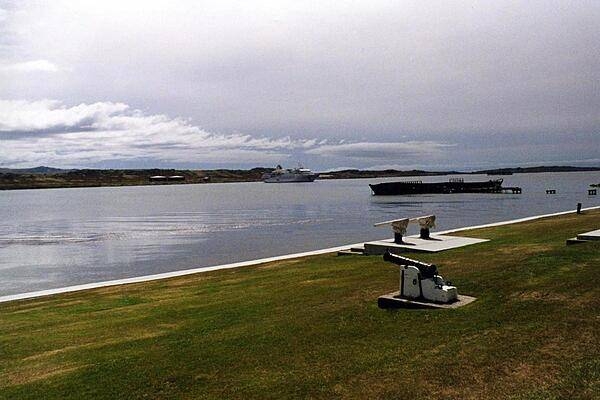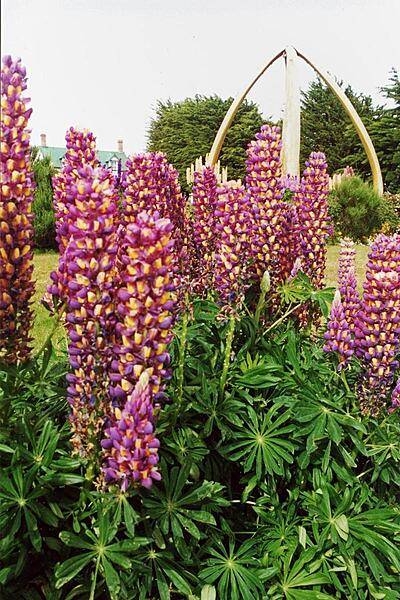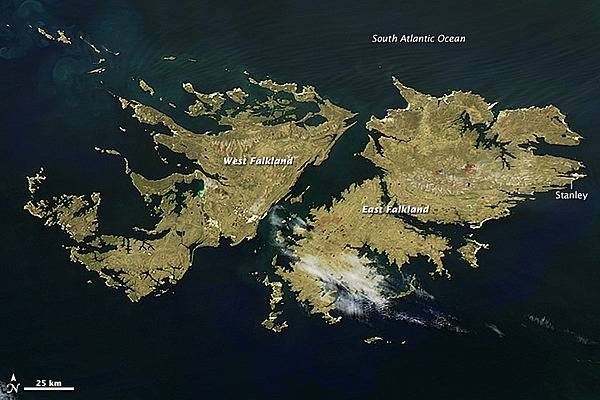4 Photos
Filter Categories
All
Filters
A Stanley shoreline view with a cruise ship in the background. Stanley is the only "city" on the islands (population about 2,100) and is the main shopping area.

A mid-summer Stanley neighborhood scene.

Colorful blossoms brighten a park in Stanley.

The Falkland Islands lie about 600 km (400 mi) east of Argentina and 1,350 km (850 mi) north of the Antarctic Circle. There are 778 islands in this territory of the United Kingdom, but just two large islands - East Falkland and West Falkland - comprise the bulk of the Connecticut-sized landmass.
Few trees grow on the islands. Instead, grassland and heath - which is widely used as pastureland for sheep and cattle - dominate the landscape. The islands are home to nearly 500,000 sheep and 5,000 cattle, and the animals far outnumber the 2,600 permanent human residents. About 80% of the population resides in the capital of Stanley.
Farmers often burn pastureland in the early spring to encourage growth. When ewes and lambs are born, they move the young animals to recently-burned areas to graze. This satellite image captures a glimpse of a few agricultural fires west of Stanley. Image courtesy of NASA.
